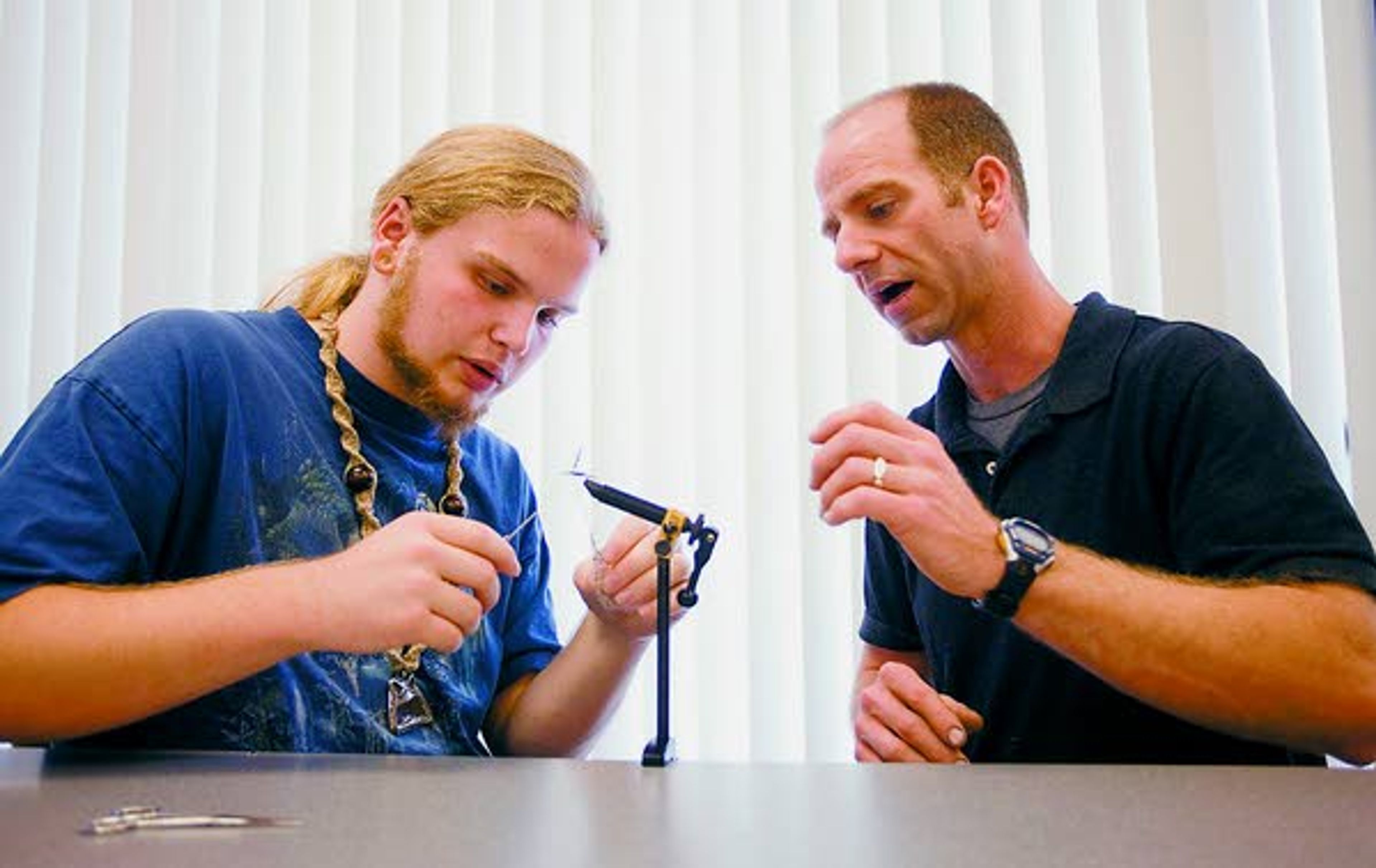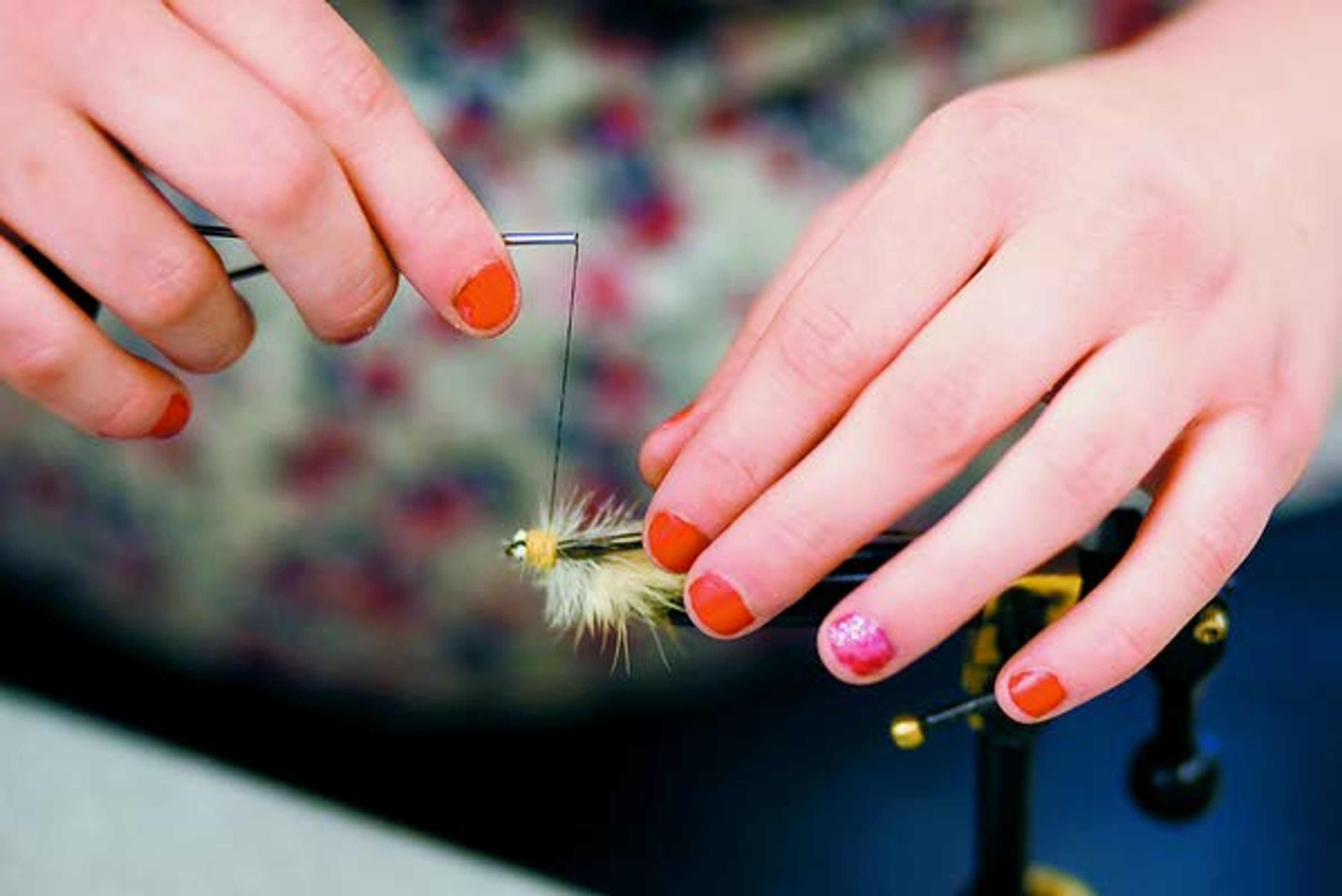Students finish ecology class by learning to tie flies
Students at Paradise Creek Regional High School finish ecology class learning to tie flies
Students at Moscow's Paradise Creek Regional High School are getting a lifelong lesson in their ecology class - the art of fly tying.
Science and math teacher Matt Pollard began the ecology class this quarter as a fun elective, something to get the students interested in a less vigorous science course. He chose to teach the class with two aspects - entomology with a hands-on portion of fly tying.
He spent the first few weeks of class teaching the students the general basics of arthropods, the animal classification that includes insects, arachnids and crustaceans.
He then asked the students to learn the basics of a subclassification of arthropods and research information such as their mating habits, what they feed on, how they move around and any diseases they may carry. Students presented their findings to the class, discussing dragonflies, fleas, cockroaches, earwigs and spiders, among others.
Meanwhile, Pollard started teaching the students the basics of fly tying, starting with large hooks and having students slowly work to more complex flies.
"I want them to have a lifelong appreciation of bugs," Pollard said.
Pollard taught the class to tie flies specific to fishing in the Moscow area and took the students on walks to Paradise Creek to collect bugs. They put the bugs in a clear jar of water and look at them from the bottom up, understanding the bug from a fish's point-of-view to help re-create them.
Through grant money from Schweitzer Engineering, help from local businesses and gathering materials from his personal stash, Pollard was able to give each student their own vice to hold the hook of the fly to be tied, bobbins and pliers as well as a variety of feathers, yarns, threads and furs commonly used to craft artificial flies.
Chris Morgan has a knack for tying flies and said he has taken his flies out fishing with friends and has caught a few, surprisingly.
Carlee Reed tackled the odonata order, including dragonflies and damselflies, for her presentation. She said both are large, flying insects commonly found in freshwater habitats. The babies live in water for most of their lives, many up to five years, and their presence helps gauge the quality of the environment based on water flow and vegetation.
Reed said they are carnivorous by nature and help control pests by feeding on mosquitoes, butterflies and spiders. Other than being used as bait by fisherman, they serve little economic importance, she said.
"Think of a dragon and a princess," Reed said. "The damselfly is much more fragile than the dragonfly."
Reed told the class the odonata order can fly up to 30 miles per hour and generally fly in large swarms, migrating, much like birds, to areas of good water and food.
Reed has been practicing tying damselflies each day in class.
Rhiannon Derrick told the class about arachnids, or eight legged bugs, which include mainly spiders, along with scorpions, ticks and mites.
Derrick explained the spider commonly referred to as daddy longlegs is difficult to kill because they have eight eyes - six regular and two on the back of the head, which allow them to see in all directions.
She said there are two main types of scorpions. The ones with a thick tail and thin pinchers are highly venomous, while ones with thin tails and big pinchers, which are more popular, are less harmful.
Derrick said all arachnids use muscle and pressure to move because they can't walk far or fast. Those that have a need to move swiftly or long distances have learned techniques such as spinning webs or jumping to move around.
Derrick said few spiders found are actually venomous, it is just their bite that hurts. She introduced the class to her new favorite thing - the vampire spider.
"It likes to feast on human blood, devouring mosquitoes that have been sucking human blood," she said. "They go on a violent frenzy, killing up to 20 mosquitoes."
She said they consume mosquitoes carrying malaria, ultimately saving human lives.
The largest spider in the world, the goliath bird eating spider, can actually eat a bird. The spider can be up to 3 inches wide and 11 inches long in leg span. Interestingly enough, Derrick said they are only found in South America, with the exception of one that is 8 inches long and is residing here in Moscow at Pets Are People Too.
"There are only two venomous spiders indigenous to the United States - the black widow and the hobo. All others have been brought into the country," Derrick said.
Pollard said the class is designed to teach students how bugs interact with the environment and to be able to identify them when they see them in nature. This is the first year he has taught the ecology class and he is hoping to keep up with it next year.
"The fly tying has forced the students to really study the bug, body parts and how it works in ecosystems," Pollard said.
Sunny Browning can be reached at (208) 883-4639, or by email to sbrowning@dnews.com.



